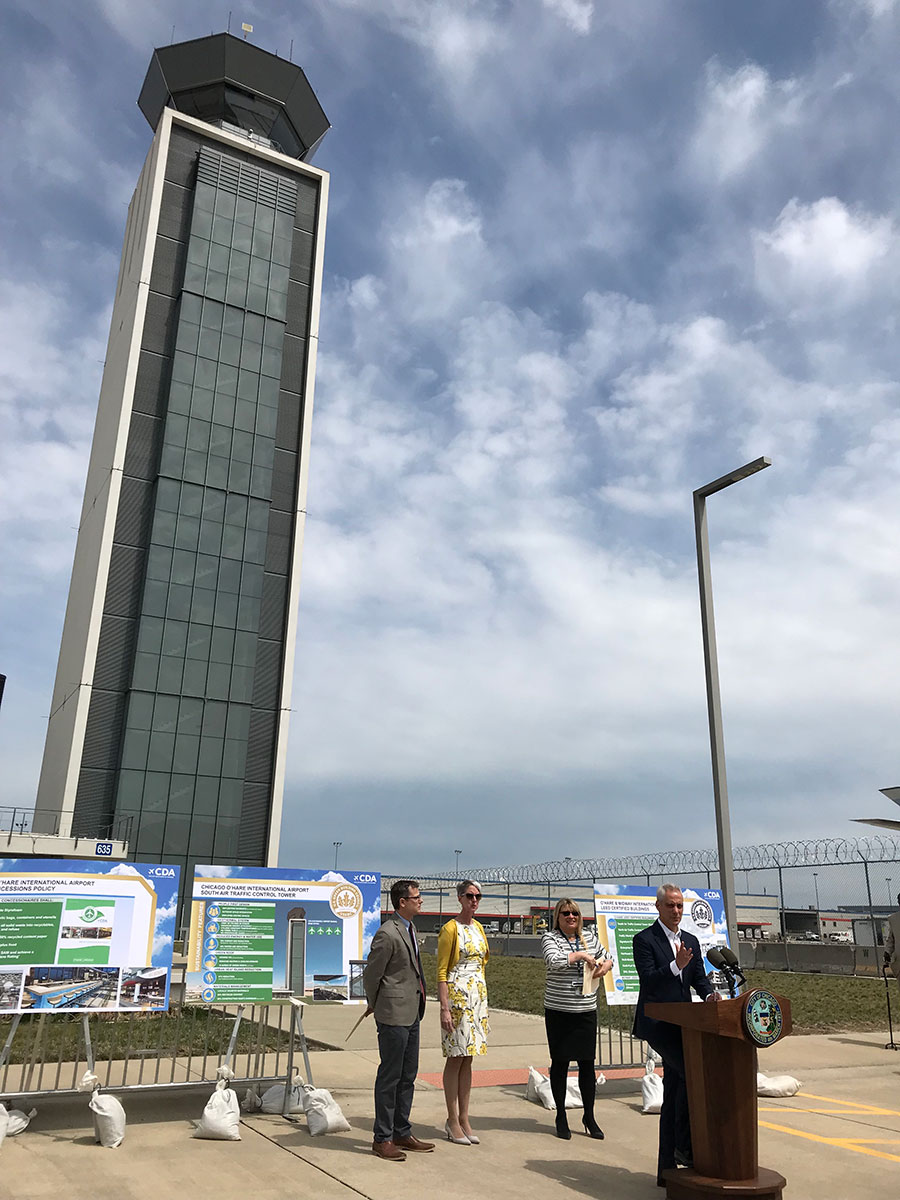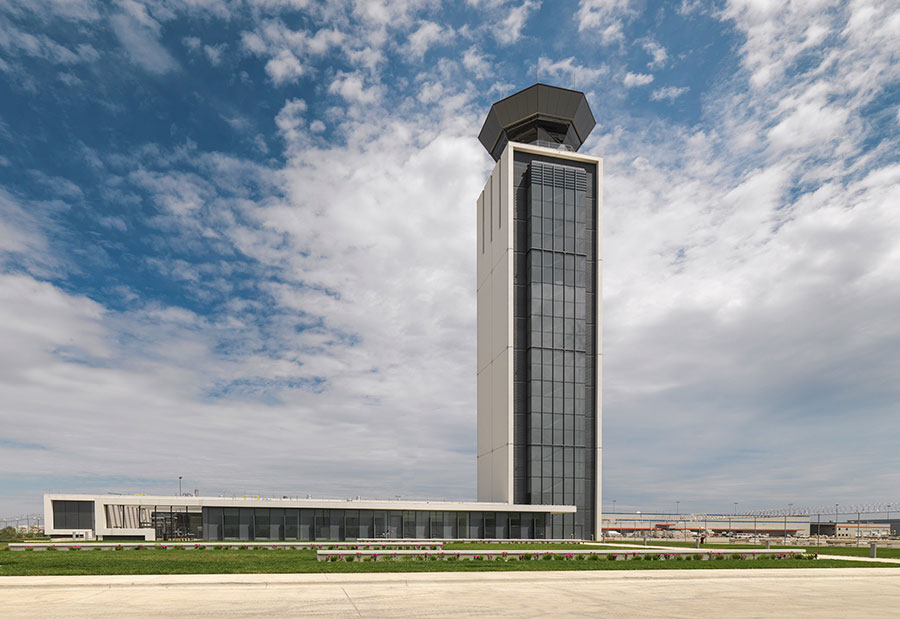April 2019
O'Hare's South Air Traffic Control Tower achieves LEED Gold certification
CHICAGO — Chicago Mayor Rahm Emanuel and the Chicago Department of Aviation (CDA) celebrated Earth Day by joining the U.S. Green Building Council (USGBC) and the Federal Aviation Administration to receive the award of LEED Gold certification on the South Air Traffic Control Tower at O’Hare International Airport. LEED (Leadership in Energy and Environmental Design) is the most widely used green building rating system in the world and provides awards based on a suite of standards for the environmentally sustainable design, construction and operation of buildings.
Built by Walsh Construction and designed by EXP, the South Air Traffic Control Tower is one of the first LEED Gold-certified air traffic control towers in the U.S.

“On top of Chicago being ranked the nation's greenest city two years in a row, O’Hare —our gateway to the world — is taking active strides to be one of the greenest airports in the world,” said Mayor Emanuel. “This tower’s prestigious LEED Gold certification is further proof of this city's commitment to building a 21st-century economy and fostering opportunities to make sustainability part of the Chicago experience.”
“O’Hare’s South Air Traffic Control Tower is central to our ongoing airfield modernization effort, dedicated to improving the safety, efficiency and connectivity of our leading global hub," said CDA Commissioner Jamie L. Rhee.

The $40 million project's sustainable features include:
- Green Roof: One of the newest green roofs in O’Hare’s nearly 12-acre inventory, the vegetated roof on the base building serves to reduce the heating and cooling demand of the facility, reduce the overall urban heat island effect of the airport, and aids in stormwater retention.
- Geothermal System: The geothermal system, the first of its kind at O’Hare, utilizes constant temperatures below the earth’s surface to generate energy and optimize the efficiency of the building’s heating and cooling systems.
- Locally-sourced Materials: The reinforced concrete structure enabled the materials to be sourced locally, allowing construction to be both cost- and time-efficient, while limiting impacts to the environment that result from material transportation.
- People-first Design: The “inverted core” design puts offices, stairs, and the elevator in the perimeter of the building, allowing staff to occupy spaces that gain southern exposure to daylight, further reducing electricity demands during daylight hours, and improving the work environment for staff.
- Reduced Energy and Water Use: All sustainable features combined (geothermal, green roof, low emissivity glass, and low-flow, efficient plumbing) reduced energy usage by 25% and water usage by 40%, as compared to a traditional control tower design.
SOURCE: City of Chicago